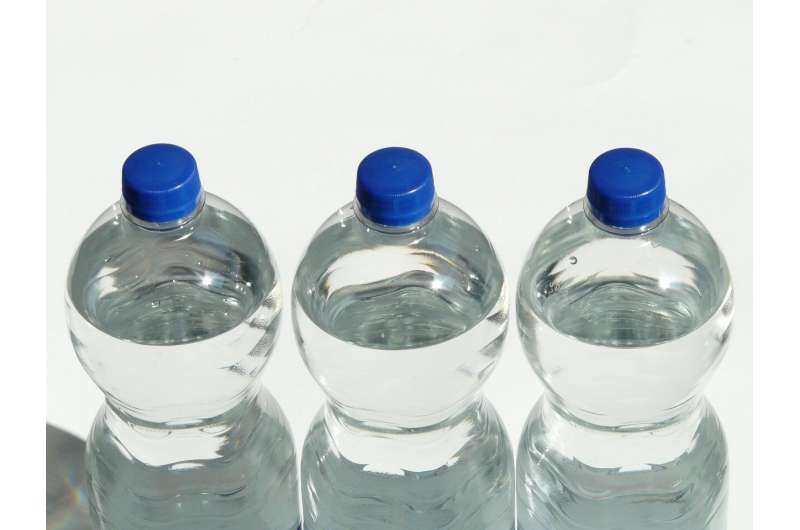This article has been reviewed according to Science X's editorial process and policies. Editors have highlighted the following attributes while ensuring the content's credibility:
fact-checked
peer-reviewed publication
trusted source
proofread
Polyethylene waste could be a thing of the past

An international team of experts undertaking fundamental research has developed a way of using polyethylene waste (PE) as a feedstock and converted it into valuable chemicals, via light-driven photocatalysis.
The University of Adelaide's Professor Shizhang Qiao, Chair of Nanotechnology, and Director, Center for Materials in Energy and Catalysis, at the School of Chemical Engineering, led the team that published their findings in the journal Science Advances.
"We have upcycled polyethylene plastic waste into ethylene and propionic acid with high selectivity using atomically dispersed metal catalysts," said Professor Qiao.
"An oxidation-coupled room-temperature photocatalysis method was used to convert the waste into valuable products with high selectivity. Nearly 99% of the liquid product is propionic acid, alleviating the problems associated with complex products that then require separation. Renewable solar energy was used rather than industrial processes that consume fossil fuel and emit greenhouse gases."
"This waste-to-value strategy is primarily implemented with four components, including plastic waste, water, sunlight and non-toxic photocatalysts that harness solar energy and boost the reaction. A typical photocatalyst is titanium dioxide with isolated palladium atoms on its surface."
Most of the plastics used today end up being discarded and accumulated in landfills. PE is the most widely used plastic in the world. Daily food packaging, shopping bags and reagent bottles are all made from PE. It is also the largest proportion of all plastic waste and primarily ends up in landfills, posing a threat to global environment and ecology.
"Plastic waste is an untapped resource that can be recycled and processed into new plastics and other commercial products," said Professor Qiao.
"Catalytic recycling of PE waste is still in early development and is practically challenging because of chemical inertness of polymers and side reactions arising from structural complexities of reactant molecules."
Current chemical recycling for PE waste is operated at high temperatures greater than 400° centigrade that yield complex product compositions.
Ethylene is an important chemical feedstock that can be further processed into a variety of industrial and daily products, while propionic acid is also in high demand owing to its antiseptic and antibacterial properties.
The team's work aims to address contemporary environmental and energy challenges, contributing to a circular economy. It will be of use in further scientific research, waste management and chemical manufacturing.
"Our fundamental research provides a green and sustainable solution to simultaneously reduce plastic pollution and produce valuable chemicals from waste for a circular economy," said Professor Qiao.
"It will inspire the rational design of high-performance photocatalysts for solar energy utilization and benefit the development of solar-driven waste upcycling technology."
More information: Shuai Zhang et al, Photocatalytic production of ethylene and propionic acid from plastic waste by titania-supported atomically dispersed Pd species, Science Advances (2023). DOI: 10.1126/sciadv.adk2407. www.science.org/doi/10.1126/sciadv.adk2407
Journal information: Science Advances
Provided by University of Adelaide





















